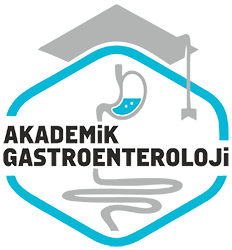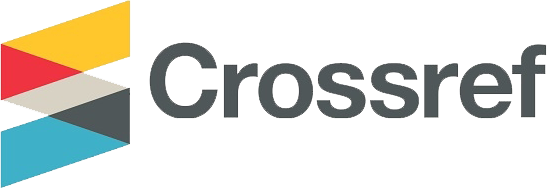Aralik 2020
Çölyak hastalarinda glutensiz diyete uyumun öngörülmesinde nötrofil-lenfosit oraninin önemi
Importance of neutrophil-lymphocyte ratio in predicting compliance with gluten-free diet in celiac patients
- Ana Sayfa
- Sayılar
- Aralik 2020
- Çölyak hastalarinda glutensiz diyete uyumun öngörülmesinde nötrofil-lenfosit oraninin önemi...
Sakarya Üniversitesi Saglik Bilimleri Fakültesi, 2Hemsirelik Bölümü, Sakarya
Özet
Giriş ve Amaç: Glutensiz diyete uyum, çölyak hastalığı tedavisinin temel tasidir. Bu çalışmanın amacı, çölyak Hastalarında nötrofil lenfositoraninin önemini belirlemektir. Gereç ve Yöntem: Bu çalışma, SakaryaÜniversitesi Egitim ve araştırma Hastanesi’nde 2014-2019 yıllari arasındaki veriler kullanilarak gerçeklestirildi. Klinik, endoskopik ve serolojikkriterlere göre çölyak hastalığı tanısı alan 166 hastanın demografikve klinik verileri hastane bilgi sistemi veri tabani geriye dönük olarakincelenerek değerlendirildi. çalışma öncesi yerel etik kurulundan izinalındı. Alici islem karakteristigi egri analizi, glutensiz diyet uyumu veglutensiz diyet uyumsuzlugunu ayirt etmek için maksimum hassasiyetve özgüllük ile nötrofil lenfosit orani sayiminin optimal kesme değerlerini tanımlamak için kullanildi. Bulgular: tanı aninda nötrofil lenfositorani açısından glutensiz diyete uyum ile glutensiz diyete uyumsuzlukarasında anlamli fark vardı [1.56 (0.51) ve 2.32 (0.86), p <0.001]. Ortalama trombosit hacmi değeri, glutensiz diyet uyumlu grupta 6.83 (0.87)iken glutensiz diyet uyumsuz grupta 7.91 (1.76) idi (p=0.058). Iki gruparasında platelet lenfosit orani açısından da anlamli bir fark görülmedi(p=0.104). Alici islem karakteristigi egrisi analizine göre, sırasıyla %87ve %52 duyarlilik ve özgüllük ile glutensiz diyet ile uyumsuz hastalar içinoptimum nötrofil lenfosit orani kesme değeri 1.585 olarak alındı. Nötrofil lenfosit oraninin glutensiz diyet uyumunda bağımsız bir prediktiffaktör olup olmadigini belirlemek için yapılan bagimli değişkenlerin ikililojistik regresyonu, glutensiz diyete uymama olasiligi, glutensiz diyeteuyumlu hastalara göre 7.386 kat daha yüksekti. Sonuç: Nötrofil lenfositorani, uygun maliyetli ve kolay hesaplandigi için sistemik inflamasyonunönemli bir ölçüsüdür. Nötrofil lenfosit orani, diyet uyumu ile ilişkili olabilir ve çölyak Hastalarında glutensiz diyet uyumsuzlugunu öngörebilir
Abstract
Background and Aims: Gluten-free diet compliance is the keystone ofceliac disease treatment. The aim of this study was to determine theimportance of neutrophil-lymphocyte ratio in celiac patients. Materialsand Methods: This study was conducted between 2014 and 2019 atthe Sakarya Training Research Hospital. The demographic and clinicaldata of the included 166 celiac disease patients, who were diagnosed byclinical, endoscopic, and serological criteria, were examined. The medicalfiles of the celiac disease patients from the hospital information databasewere retrospectively examined. The study was approved by the local ethics committees. The receiver operating characteristic curve analysis wasperformed to identify the optimal cut-off values of the neutrophil-lymphocyte ratio count with the maximum sensitivity and specificity requiredto differentiate the compliance to gluten-free diet and non-complianceto gluten-free diet. Results: A significant difference was noted betweenpatients showing compliance with gluten-free diet and non-compliancewith gluten-free diet in terms of neutrophil-lymphocyte ratio at diagnosis1.56 (0.51) vs. 2.32 (0.86), (p < 0.001). The mean platelet volume valuewas 6.83 (0.87) in the gluten-free diet compatible group and 7.91 (1.76)in the gluten-free diet noncompliant group (p=0.058). No significantdifference was noted in platelet-to-lymphocyte ratio between the twogroups (p=0.104). The receiver operating characteristic curve analysissuggested that the neutrophil-lymphocyte ratio cut-off value for patientswith non-compliance gluten-free diet was 1.585, with the sensitivity andspecificity of 87% and 52%, respectively. Using the logistic regressionof the dependent variables, which was performed to determine whether compatible gluten-free diet was an independent predictive factor forneutrophil-lymphocyte ratio, the possibility of compatible gluten-free dietwas 7.386-times greater in patients with non-compliance to gluten-freediet than in those with compliance to gluten-free diet. Conclusion: Neutrophil-lymphocyte ratio is an important measure of inflammation, andit is economical and easy to determine. The neutrophil-lymphocyte ratiomay be associated with dietary compliance and can predict gluten-freediet incompatibility in celiac disease patients.



